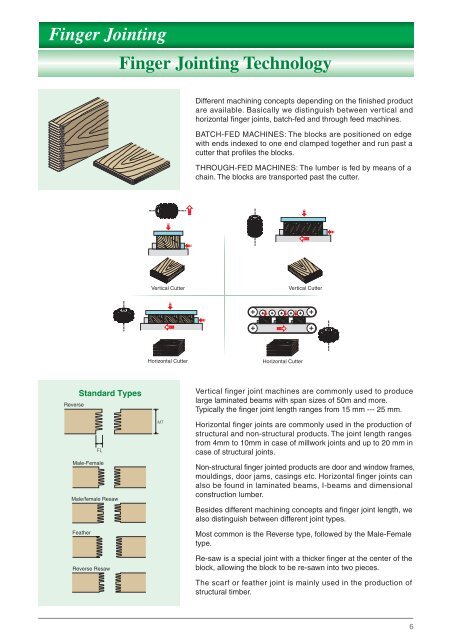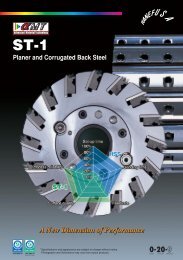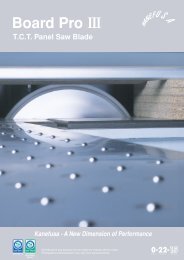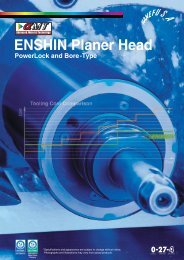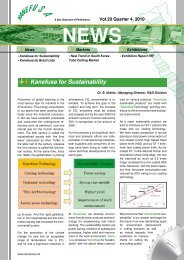Finger Joint Cutters
Finger Joint Cutters
Finger Joint Cutters
Create successful ePaper yourself
Turn your PDF publications into a flip-book with our unique Google optimized e-Paper software.
<strong>Finger</strong> <strong>Joint</strong>ing<br />
Reverse<br />
Standard Types<br />
FL<br />
Male-Female<br />
Male/female Resaw<br />
Feather<br />
Reverse Resaw<br />
<strong>Finger</strong> <strong>Joint</strong>ing Technology<br />
Vertical Cutter<br />
Horizontal Cutter<br />
MT<br />
Different machining concepts depending on the finished product<br />
are available. Basically we distinguish between vertical and<br />
horizontal finger joints, batch-fed and through feed machines.<br />
BATCH-FED MACHINES: The blocks are positioned on edge<br />
with ends indexed to one end clamped together and run past a<br />
cutter that profiles the blocks.<br />
THROUGH-FED MACHINES: The lumber is fed by means of a<br />
chain. The blocks are transported past the cutter.<br />
Horizontal Cutter<br />
Vertical Cutter<br />
Vertical finger joint machines are commonly used to produce<br />
large laminated beams with span sizes of 50m and more.<br />
Typically the finger joint length ranges from 15 mm --- 25 mm.<br />
Horizontal finger joints are commonly used in the production of<br />
structural and non-structural products. The joint length ranges<br />
from 4mm to 10mm in case of millwork joints and up to 20 mm in<br />
case of structural joints.<br />
Non-structural finger jointed products are door and window frames,<br />
mouldings, door jams, casings etc. Horizontal finger joints can<br />
also be found in laminated beams, I-beams and dimensional<br />
construction lumber.<br />
Besides different machining concepts and finger joint length, we<br />
also distinguish between different joint types.<br />
Most common is the Reverse type, followed by the Male-Female<br />
type.<br />
Re-saw is a special joint with a thicker finger at the center of the<br />
block, allowing the block to be re-sawn into two pieces.<br />
The scarf or feather joint is mainly used in the production of<br />
structural timber.<br />
6


